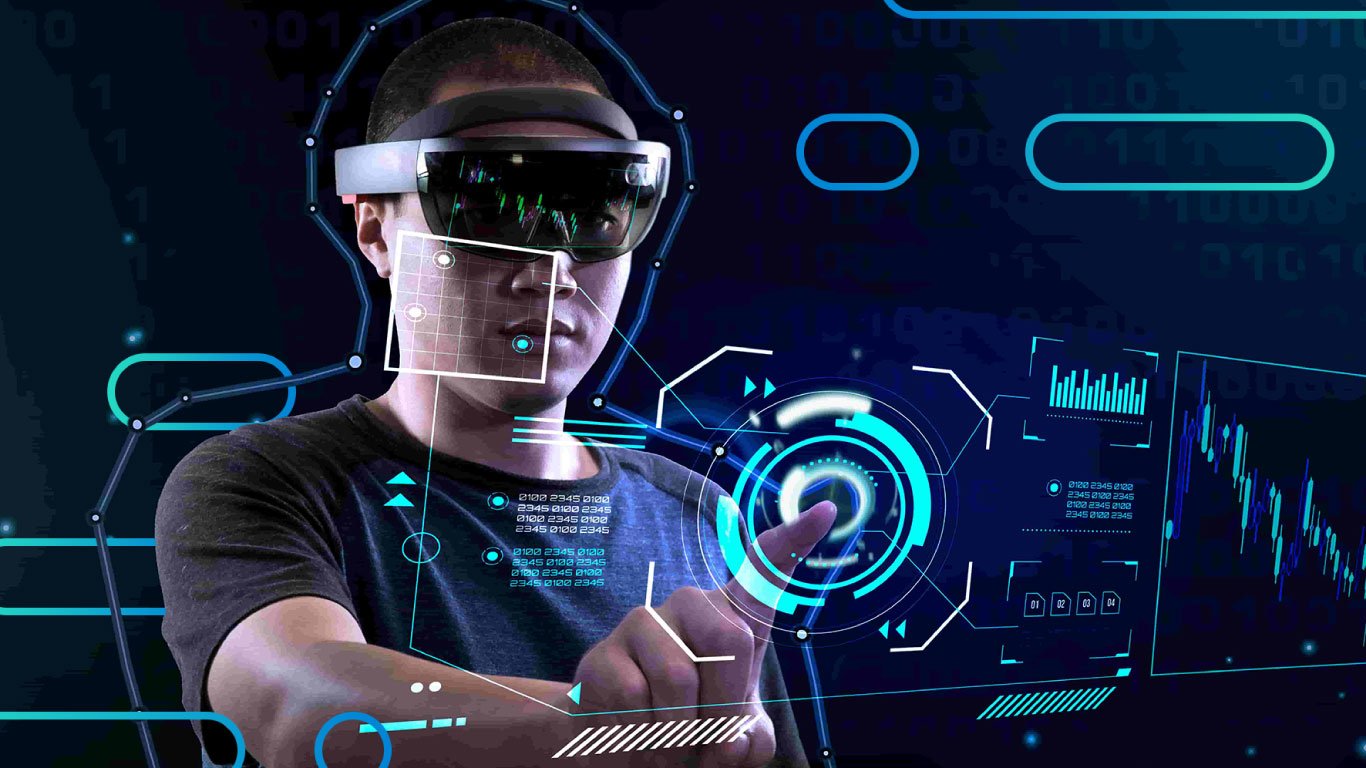The Rise of Virtual Reality and its Potential Applications

Virtual Reality (VR) technology has emerged as one of the most exciting and transformative innovations in recent years. With its ability to create immersive digital experiences, VR has the potential to revolutionize various industries and reshape the way we interact with the digital world. In this article, we will explore the rise of virtual reality, its underlying technology, and its potential applications across different sectors.
Table of Contents
- Introduction
- Understanding Virtual Reality
- How Virtual Reality Works
- Applications of Virtual Reality
- Gaming and Entertainment
- Education and Training
- Healthcare and Medicine
- Architecture and Design
- Tourism and Travel
- Retail and E-commerce
- Sports and Fitness
- Social Interaction and Communication
- Psychology and Therapy
- Simulation and Visualization
- Advantages of Virtual Reality
- Immersive Experiences
- Enhanced Learning and Training
- Realistic Simulations
- Expanded Accessibility
- Innovative Design and Prototyping
- Challenges and Limitations
- Cost and Accessibility
- Technical Limitations
- Health and Safety Concerns
- Content Creation and Adoption
- Motion Sickness and Discomfort
- Future Trends in Virtual Reality
- Conclusion
- FAQs (Frequently Asked Questions)
1. Introduction
Virtual Reality (VR) refers to the use of computer technology to create simulated environments that can be explored and interacted with by users. Through the use of specialized headsets and motion-tracking devices, VR offers a unique and immersive experience that transports users to virtual worlds and enables them to engage with digital content in a whole new way.
2. Understanding Virtual Reality
At its core, virtual reality aims to create a sense of presence, making users feel as though they are truly present in a computer-generated environment. This is achieved through a combination of visual, auditory, and sometimes haptic (touch-based) stimuli that trick the senses into perceiving the virtual world as real.
3. How Virtual Reality Works
Virtual Reality works by presenting users with computer-generated visuals and audio that are synchronized and responsive to their movements. This is typically achieved through the use of a VR headset, which consists of a high-resolution display, motion sensors, and sometimes built-in speakers or headphones. The headset tracks the user’s head movements and adjusts the displayed visuals accordingly, creating a 360-degree field of view.
4. Applications of Virtual Reality
4.1 Gaming and Entertainment
Gaming has been one of the primary drivers of virtual reality technology. VR gaming allows players to immerse themselves in realistic and interactive virtual worlds, providing a more engaging and immersive experience than traditional gaming platforms.
4.2 Education and Training
Virtual reality has tremendous potential in the field of education and training. It enables immersive and interactive learning experiences, allowing students to explore historical events, visit distant locations, conduct virtual experiments, and practice real-world skills in a safe and controlled environment.
4.3 Healthcare and Medicine
Virtual reality is revolutionizing healthcare by enabling innovative treatments, surgical simulations, and therapy techniques. It can be used for pain management, phobia treatment, physical rehabilitation, and even remote consultations and surgeries.
4.4 Architecture and Design
Architects and designers can utilize virtual reality to create virtual walkthroughs of buildings, interior designs, and urban spaces. VR allows stakeholders to experience and visualize designs before construction, facilitating better decision-making and collaboration.
4.5 Tourism and Travel
Virtual reality offers the potential to transform the tourism and travel industry by providing virtual tours of destinations, historical sites, and attractions. Users can explore and experience different locations from the comfort of their homes, enticing them to plan real-world trips.
4.6 Retail and E-commerce
Virtual reality can enhance the online shopping experience by allowing users to virtually try on clothes, visualize products in their own space, and browse virtual stores. This immersive experience improves customer engagement and helps bridge the gap between online and offline shopping.
4.7 Sports and Fitness
Virtual reality can be integrated into sports and fitness training, providing athletes with realistic simulations and performance analysis. It offers interactive workout experiences and virtual coaching, motivating individuals to stay active and achieve their fitness goals.
4.8 Social Interaction and Communication
VR enables social interactions in virtual environments, allowing people from different locations to meet, collaborate, and engage in shared experiences. Virtual reality can bridge the gap between physical distances and foster connections in a new and immersive way.
4.9 Psychology and Therapy
Virtual reality is increasingly being used in psychology and therapy to treat various mental health conditions such as anxiety disorders, post-traumatic stress disorder (PTSD), and phobias. It provides a controlled and immersive environment for exposure therapy and therapeutic interventions.
4.10 Simulation and Visualization
Virtual reality is widely utilized for simulations and visualizations in industries such as aviation, engineering, and manufacturing. It enables realistic training scenarios, virtual prototyping, and data visualization, leading to improved safety, efficiency, and decision-making.
5. Advantages of Virtual Reality
5.1 Immersive Experiences
Virtual reality offers unparalleled immersion, allowing users to feel as though they are part of the virtual world. This deep level of engagement enhances entertainment, education, and various professional applications.
5.2 Enhanced Learning and Training
VR-based learning and training experiences improve retention and understanding by providing hands-on, interactive, and realistic simulations. This leads to accelerated learning and better skill acquisition.
5.3 Realistic Simulations
Virtual reality enables the creation of realistic simulations that can replicate complex real-world scenarios. This is particularly valuable in fields such as healthcare, aviation, and hazardous industrial environments, where training in safe and controlled settings is essential.
5.4 Expanded Accessibility
Virtual reality can offer accessible experiences to individuals with physical disabilities or limitations. It provides opportunities for participation, exploration, and social interactions that may otherwise be challenging or impossible.
5.5 Innovative Design and Prototyping
Virtual reality facilitates the design and prototyping process by allowing designers to visualize and iterate their creations in a virtual space. This leads to improved design outcomes, reduced costs, and faster development cycles.
6. Challenges and Limitations
6.1 Cost and Accessibility
The cost of high-quality VR hardware and software can be a barrier to widespread adoption. Additionally, accessibility issues related to hardware requirements and technological literacy need to be addressed to ensure equitable access to virtual reality experiences.
6.2 Technical Limitations
Current VR technology has certain limitations, such as visual fidelity, field of view, and motion tracking accuracy. Ongoing advancements in hardware and software are addressing these limitations, but further improvements are still needed.
6.3 Health and Safety Concerns
Extended use of virtual reality can lead to discomfort, motion sickness, and eye fatigue for some individuals. Developers and designers must prioritize user comfort and implement techniques to minimize these adverse effects.
6.4 Content Creation and Adoption
Creating high-quality and engaging content for virtual reality can be a challenge. The industry needs more content creators, developers, and designers who understand the unique requirements of VR experiences.
6.5 Motion Sickness and Discomfort
Certain individuals may experience motion sickness or discomfort when using virtual reality due to a disconnect between visual perception and physical movement. Advances in motion tracking and user interface design aim to mitigate these issues.
7. Future Trends in Virtual Reality
The future of virtual reality holds exciting possibilities:
- Wireless VR: Advancements in wireless technology will enable untethered VR experiences, providing more freedom of movement and eliminating the need for cumbersome cables.
- Improved Visuals: Higher-resolution displays, wider field of view, and better graphics will enhance the visual realism and immersion of virtual reality.
- Haptic Feedback: The integration of haptic feedback systems will allow users to experience tactile sensations, further enhancing the sense of presence and interaction.
- Social VR: Virtual reality will continue to evolve as a social platform, allowing people to connect, interact, and collaborate in virtual environments.
- Augmented Reality Integration: The integration of virtual reality with augmented reality (AR) will create a mixed reality experience, blending the virtual and physical worlds seamlessly.
8. Conclusion
Virtual reality technology has immense potential to transform various industries and redefine our digital experiences. From gaming and entertainment to healthcare, education, and beyond, VR offers immersive and interactive possibilities. While challenges exist, ongoing advancements and growing adoption indicate a bright future for virtual reality.
FAQs (Frequently Asked Questions)
Q1. What is virtual reality? Virtual reality is a technology that creates simulated environments, allowing users to immerse themselves and interact with digital content in a realistic and immersive manner.
Q2. How does virtual reality work? Virtual reality works by presenting users with computer-generated visuals and audio that respond to their movements. Specialized headsets and motion-tracking devices enable users to explore and engage with virtual environments.
Q3. What are the potential applications of virtual reality? Virtual reality has applications in gaming, education, healthcare, architecture, tourism, retail, sports, psychology, and more. It can enhance experiences, training, simulations, and social interactions.
Q4. What are the advantages of virtual reality? Virtual reality offers immersive experiences, enhanced learning and training, realistic simulations, expanded accessibility, and innovative design and prototyping capabilities.
Q5. What are the challenges of virtual reality? Challenges in virtual reality include cost and accessibility, technical limitations, health and safety concerns, content creation and adoption, and potential motion sickness or discomfort.
